Pimcore Omnichannel: Experience the future of retail
It’s here. The omnichannel revolution is upon us. All companies, be they B2C, B2B or B2B2C, are changing their in-store strategies to adapt to new customer behaviors.
Why are they doing this?
Shoppers’ expectations are reaching new levels, they have new priorities and they want perfect shopping experience – on every buying channel and platform.
The change is happening so fast that digital businesses can no longer push aside new technologies. They need to act more swiftly, engage smarter and deliver more fantastic experience if they wish for overall revenue growth.
Firstly, to define omnichannel – it’s a cross-channel content strategy used to improve user experience. Rather than working in parallel, communication channels and their supporting resources are designed and orchestrated to cooperate.
Main omnichannel benefits for customers are:
- Finding ample information across channels to simplify buying decisions
- Receiving personalized services consistently across channels
- Receiving a quicker and more convenient way to buy
On the other hand, there are also crucial benefits for businesses:
- Enhancing selling probability across channels
- Improving customer experience
- Providing opportunities to upsell and cross-sell based on purchasing history
- Building trust and ensuring a successful loyalty program
“Being everywhere” is the new black in business and those who implement newer technologies first will be the winners in the long-run.
Pimcore is the perfect platform for businesses trying to reach an ideal shopping experience – luckily, we offer services concerning Pimcore development so don’t hesitate to shoot us up.
Besides that, there are plenty of benefits of eCommerce for both businesses in retail and customers so get familiar with it and do it – we encourage you!
Evolving shopping behavior
If you compare today’s shopping experience with last decade’s, there is a huge difference in ways of operating the business and serving customers.
Those changes are forming new expectations of the shopping experience both online and in-store.
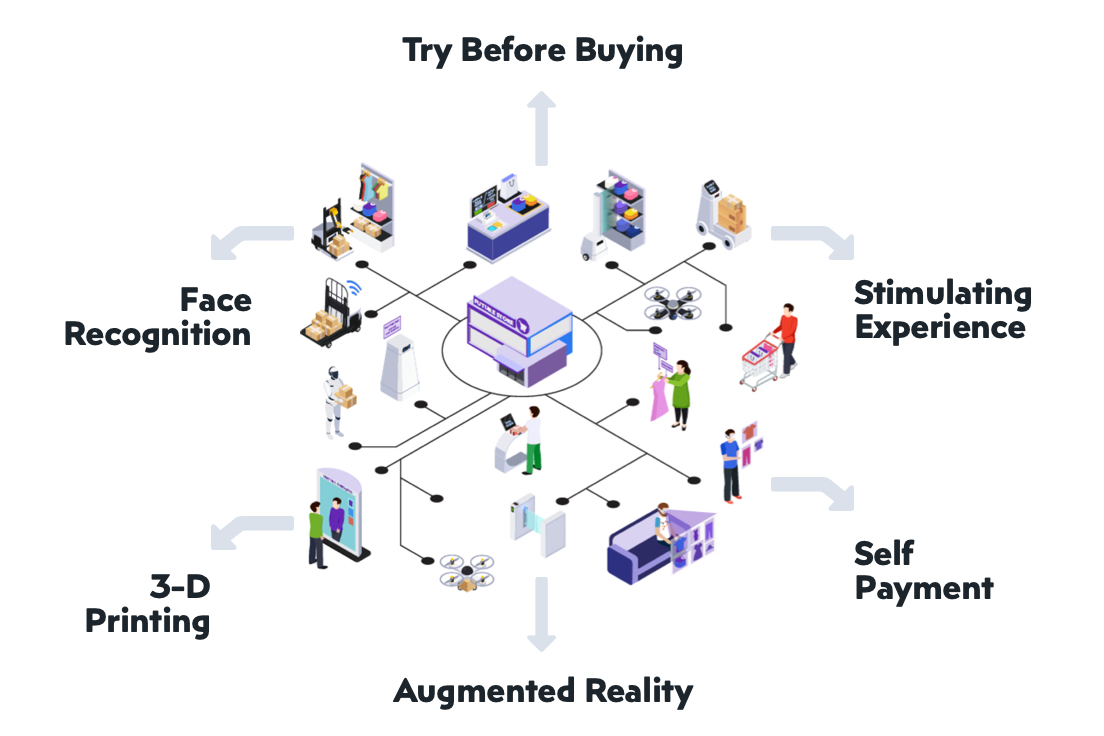
New technologies, like Voice Command Assistants, IoT devices, Smart Shelves, Beacons and others are bringing new standards to both eCommerce and physical stores. They are giving us a glance at the future of shopping.
Mainstream retailers are incorporating these new technologies for process management, operation optimization, centralized monitoring, immersive customer experience, and operation cost reduction.
Try to picture a new-generation store where displayed products have enough intelligence to show you price changes in real-time. Data like expiry date and more would also be displayed. It communicates to both customers and businesses. It can contact the vendor and supplier about the inventory requirements on a specific time and date.
Furtherly, it’s possible to maintain consistency of product information and all related offers across all channels – mobile, web, social, POS, and more.
Consistency of product information is so important that if a customer found any disparity across channels, it could negatively impact that customer’s shopping experience in whole. That could lead to further dissatisfaction and affecting their future visits and purchasing decisions.
Therefore, to win over your customers with an amazing shopping experience – be everywhere and be consistent!
Omnichannel trends
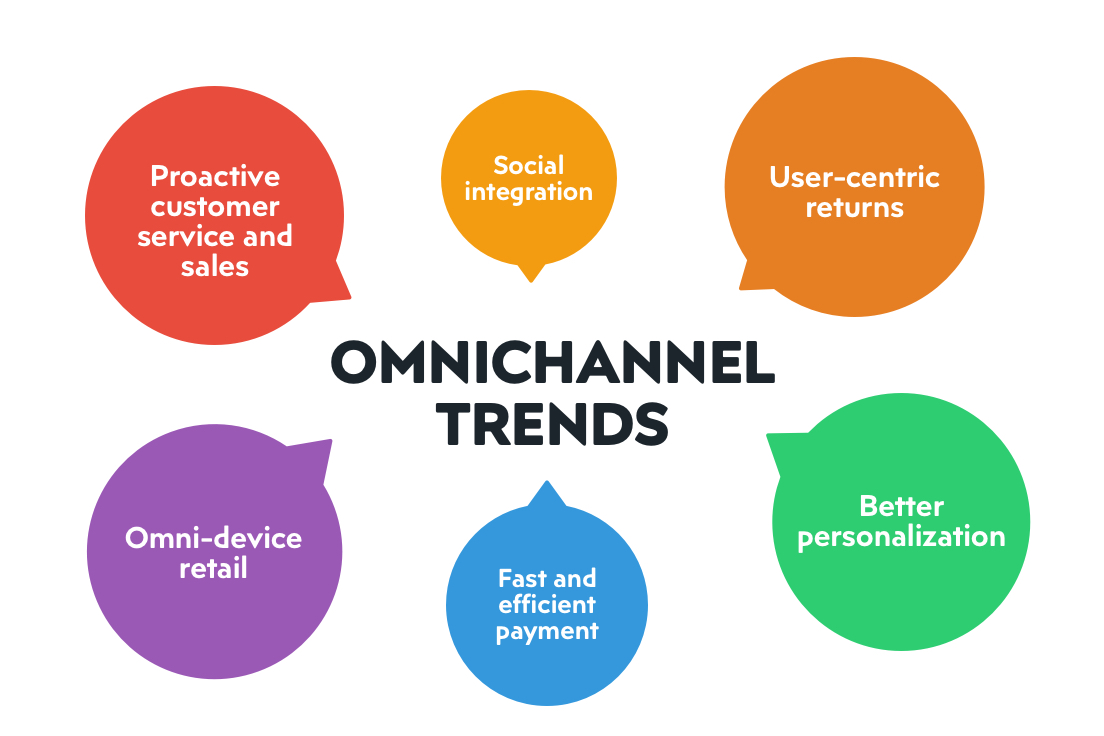
Omnichannel commerce is now setting new rules. The current trend in using omnichannel as a competitive advantage is using it to create personalized experiences that engage customers.
The retail sector is acting unanticipated while trying to convert more customers. Mainstream retailers are pushing forward to create immersive shopping experiences by combining the use of newer technologies, as it was mentioned in the beginning.
There are several trends leading the omnichannel strategy and the first one we mention is:
Better personalization
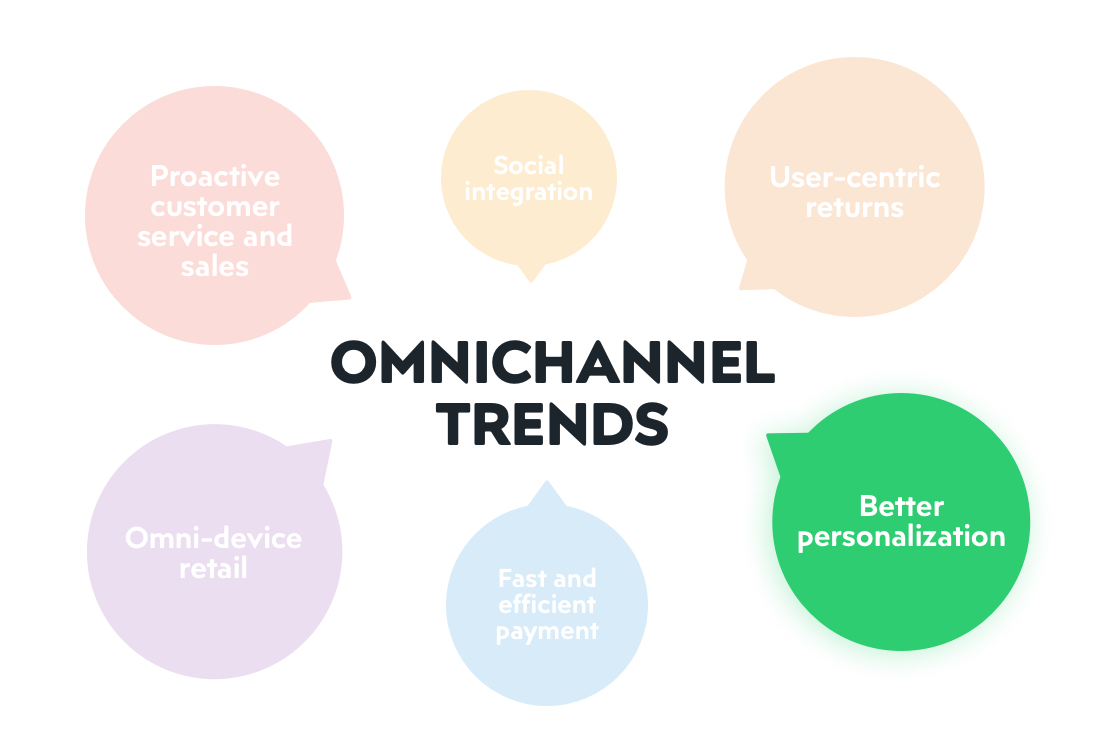
Shoppers are expecting from companies to know who they actually are. They don’t want to go from the start every time use a new channel during their shopping journey. Personalization also represents one of the ways of building a digital experience platform (DXP). A way to enable customers with the most amazing and immersive experience possible.
To overcome this challenge, brands can use the data collected through multiple touchpoints so they could personalize advertisements and messages for each of their customers. When all channels are connected, every touchpoint helps to reinforce your competitive advantage and establishes a better relationship with your customers.
Fast and efficient payment
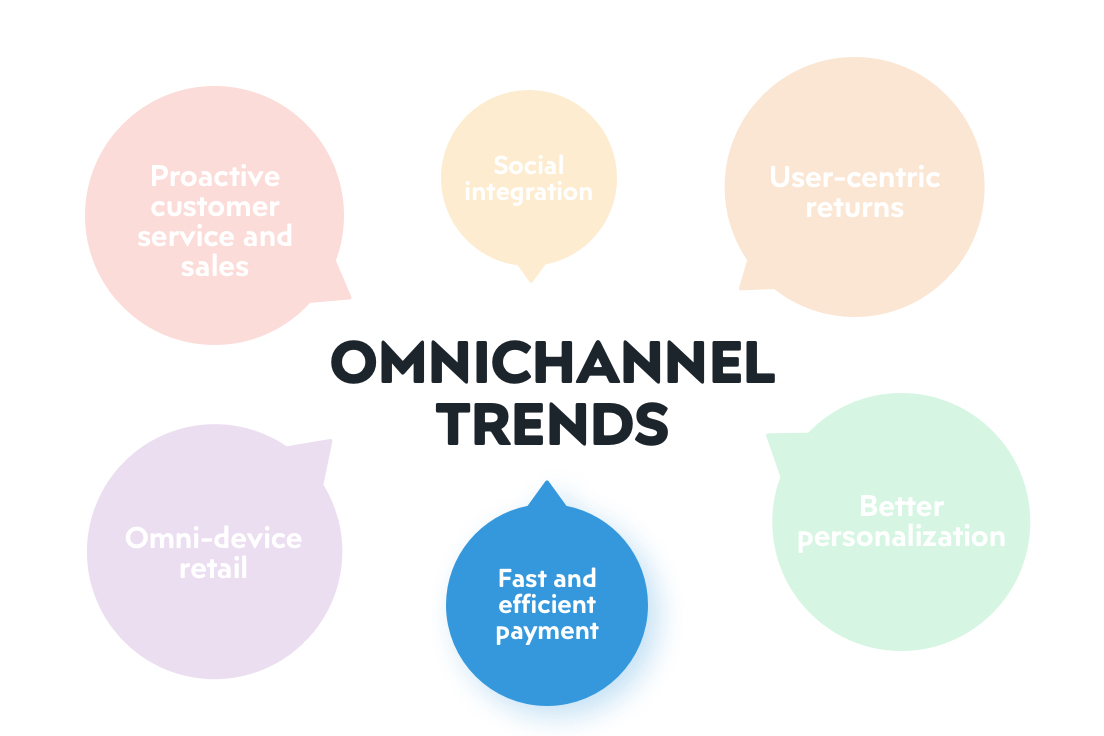
Customers expect simpler methods for checkout, be it online, in-store or even over the phone. They will gravitate toward businesses that don’t require them to enter their billing address, credit card number, expiry date, etc. – especially existing customers.
Now, when blockchain solutions are on the rise, contactless payments and mobile wallets are an everyday thing, customers want to use that and brands that offer them this way of payment will have the upper edge.
One business got mass attention by implementing this kind of payment – Lamborghini. They are the first car industry brand that offers payment in Bitcoin, which led to a huge increase in brand popularity.
Omni-device retail
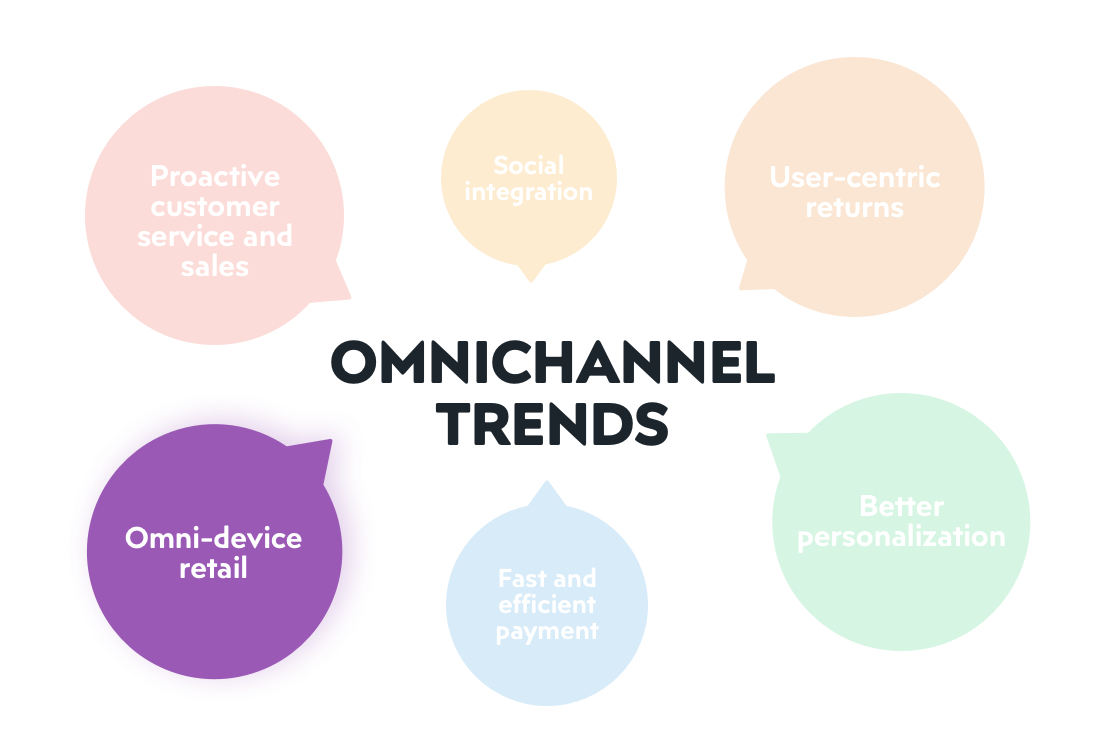
It would be ideal for customers if they could simply toggle between devices while resuming their previous shopping experience. Rather than starting from the beginning, customers should be able to continue where they left off. Businesses that can enable that kind of service will experience a positive impact on their customer’s experience.
Currently, the only way to really see how your customers are using multiple devices is to leverage a customer identifier strategy to do it for you.
Usually, it starts with driving activity toward the user’s accounts as much as possible via loyalty cards, account-dependent promotions, and other incentives.
Proactive customer service and sales
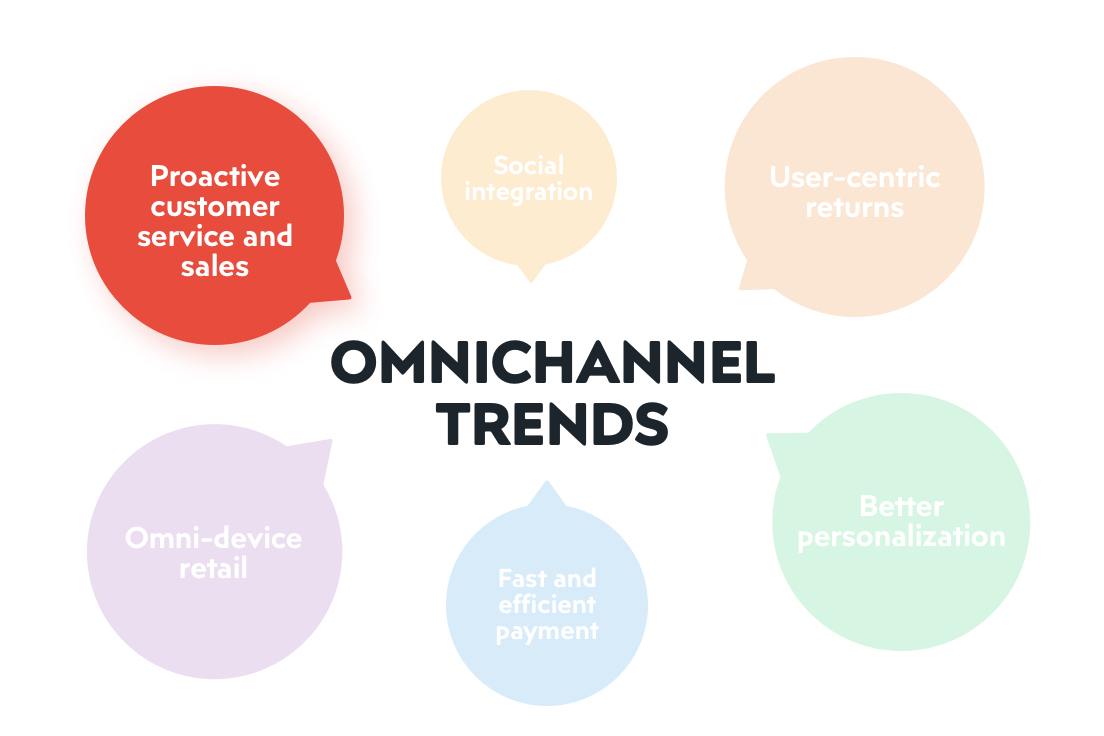
Omnichannel retail gives businesses access to information that helps them with the decipherment of customers’ needs, be they already expressed or undiscovered.
It helps you resolve the best solutions that can eradicate customers’ problems, whether it’s the inventory replenishment, an accessory they should add to their shopping cart or a reminder of why they searched for you.
With this kind of proactive approach, you help your customers complete their order and get what they initially wanted by using any channel that is most convenient for them.
Social integration
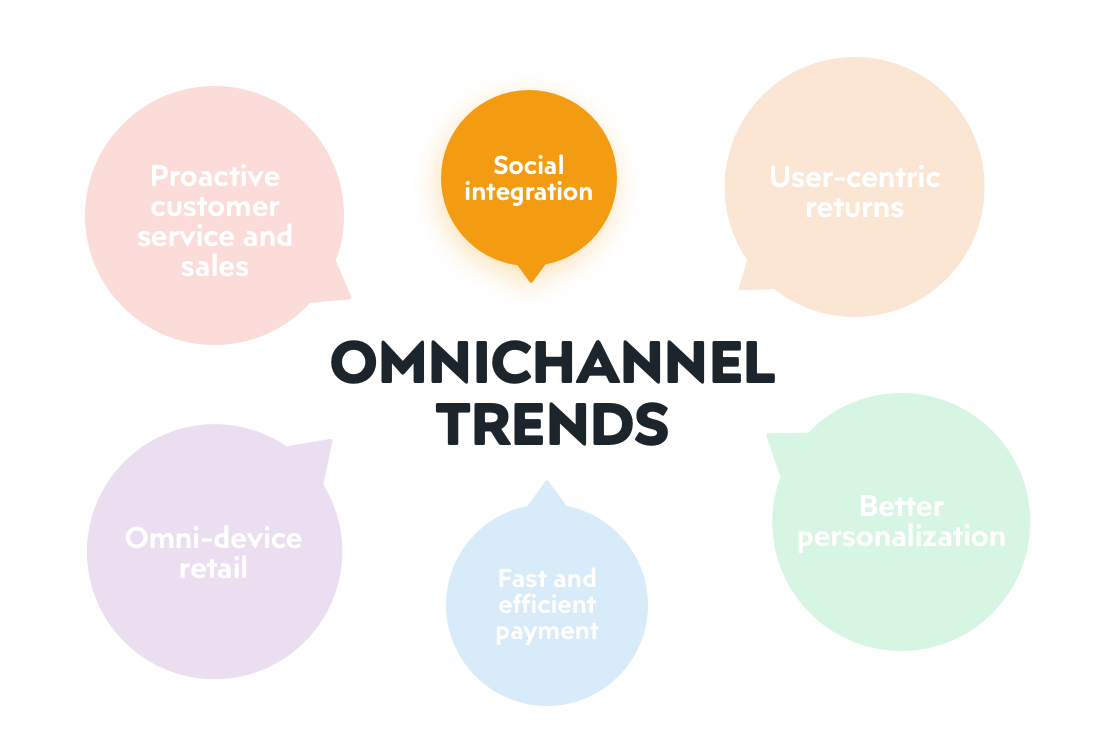
The number of visually-oriented customers is unbelievably high and usually, they prefer to shop from their preferred social media platforms. This creates an opportunity for omnichannel retailers to take the higher ground.
Retailers should integrate social content into their websites, add their product listings to social media posts or even show their social content on IoT devices in-store. It would have a positive impact on all visually-oriented shoppers.
User-centric returns

Another trend in omnichannel retail is the user-centric return of their purchases. Be it in-store, through the mail, through scheduled pick-ups or strategic drop-off points, shoppers want more convenient options to return their purchases.
Retailers must upgrade their inbound logistics strategy and look for the swift and cost-efficient methods to accomplish easier returns. Also to mention, a mobile app for retailers is something you mustn’t avoid. It’s crucial as one of the key channels your customers will come in touch with.
Omnichannel vs. Multichannel
Omnichannel and multichannel marketing may both have a focus on the use of multiple channels to reach consumers and new customers, but in essence, they are two very distinct and separate strategies.
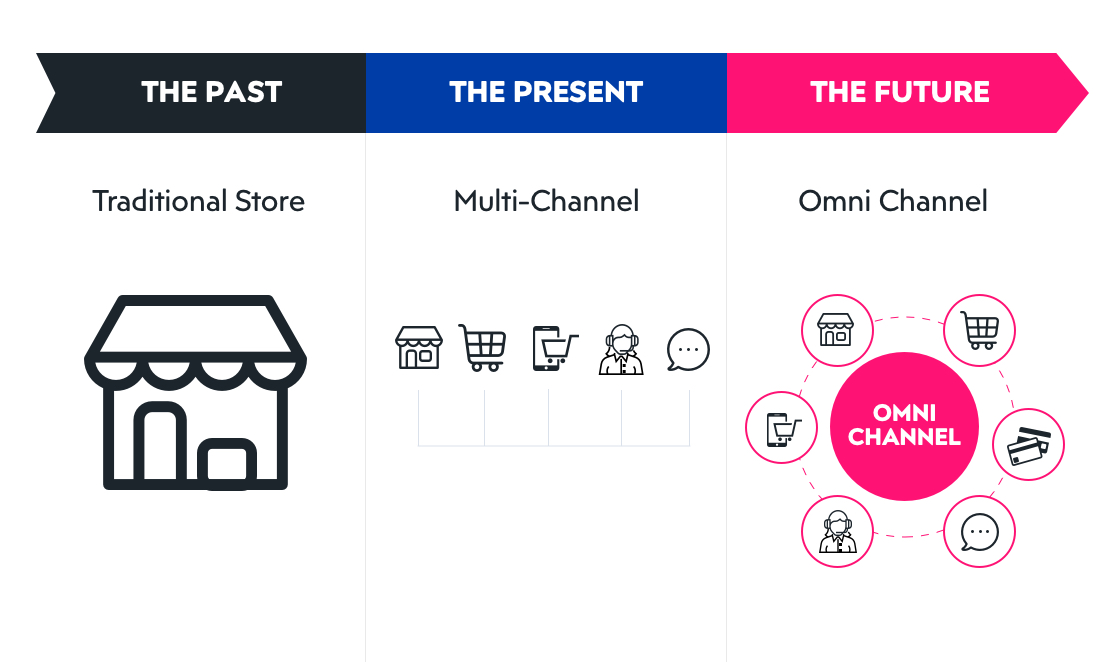
Multichannel and omnichannel approaches are quite different. In the omnichannel approach, the customer really is at the core – opposed to simply enabling a touch point, customers have unified experience at every touch point.
In fact, companies with well-incorporated omnichannel customer experience are achieving much higher results that the competition.
To summarize, multichannel would mean many and omnichannel would mean all – customer is at the center.
There are even more differences and we shall highlight a few more:
Channel vs. customer
The multichannel approach aims at getting the word out via the maximum number of channels. It’s about casting the net as wide as possible, to get the most customer engagements.
On the other hand, the omnichannel approach inter-relates every channel to engage with customers as a whole, ensuring they have an amazing experience with the brand across all channels.
Consistency vs. engagement
Omnichannel businesses ensure their customers receive the same experience across all channels, creating a key difference between omni- and multichannel businesses – consistency.
Brand consistency in forms of brand image and message creates a high-level sense of familiarity and relationship with the brand. For example, social media, sales, and PR – they all must all portray the same consistent message to ensure that an omnichannel strategy is successful.
Effort vs. effortless
Another priority of an omnichannel strategy is to eradicate all efforts from the customer experience. Omnichannel involves using data to locate the effort in customer experience and to understand how to remove it. The goal is to create an effortless and convenient shopping experience.
How to build an omnichannel strategy
The latest vogue of customers to explore, buy, pick-up, and return products across multiple channels puts severe demands on decision-makers. It enforces them to ship from all stocks, across all channels, anywhere, anytime.
Not only that they need to improve the agility of their current operations, but they also need to develop new ways of retailing:
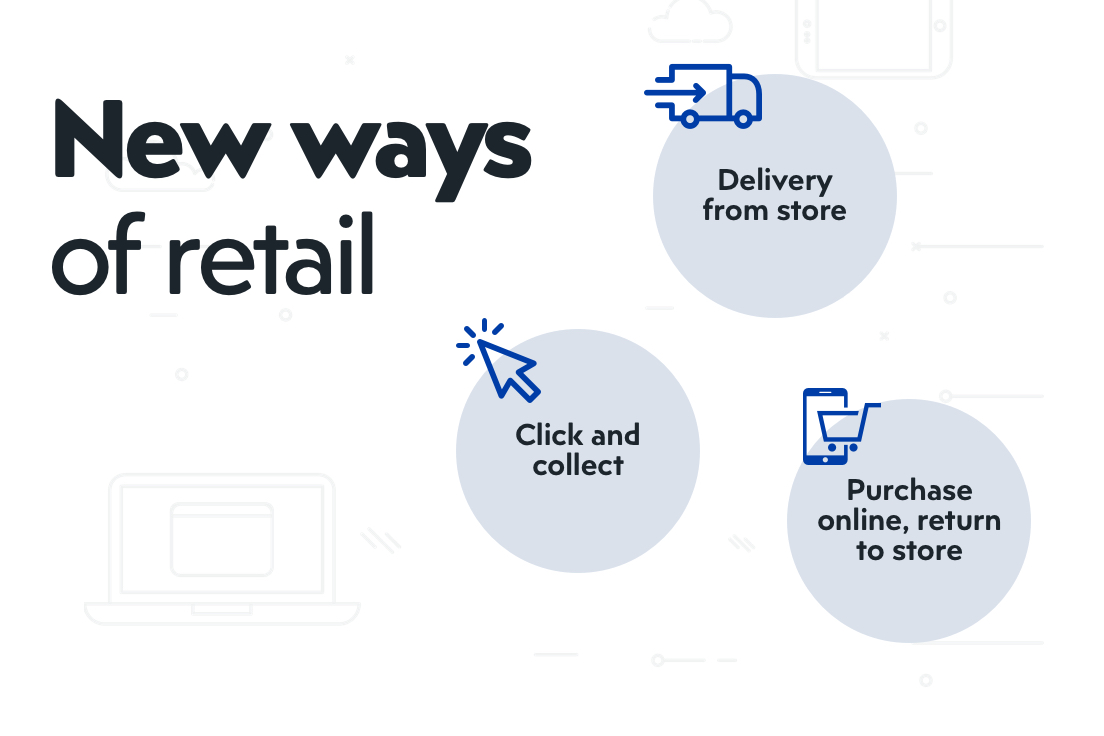
Implementing these ways of retailing will enable customers to keep in touch with all channels at the same time, increasing the level of their satisfaction. Also, there are more ways to retain your customers and improve their satisfaction but for now, think of what are the benefits of an omnichannel strategy.
To implement a successful omnichannel strategy, the first and the most important step is to communicate the same product information across all channels. Other needed steps are:
- 360-degree availability – Enable customers to find what they need, as well as discover new and different products and services across channels, regardless of the product or the combination of products and services, without inconvenience or delays.
- Integrate the right architecture – Integrate the right platform that supports highly flexible fulfillment models, including traditional, in-store shopping and many last-mile delivery options.
- Pricing and real-time engagement – Facilitate customers to compare pricing, available loyalty programs/discount coupons and enhance their overall consumption experience in real-time across all touchpoints for an engaging experience.
- Measure performance – React to customers’ expectations and needs and continuously measure and value performance
Also, to ensure the captivating experience for your customers, take a look at the checklist before starting an eCommerce app. On our blog, we wrote numerous articles on how to increase your brand awareness and improve your customers’ experience and sales on both the app and website.
PIM – the most important omnichannel tool
Setting up omnichannel commerce is almost impossible without the implementation of certain tools and technologies. One such tool is – PIM.
PIM stands for Product Information Management. It refers to the process for handling all the data, content, and other material that is needed to market and sell products. PIM also ensures that quality data is created for internal use and multichannel distribution.
Pimcore is the ultimate PIM platform which makes it perfect for omnichannel businesses. Pimcore Open Source PIM is the leading open-source product information management and master data management application. It centralizes and harmonizes all your marketing, sales, and technical product information.
The shifting shopping fundamentals and emerging new strategies increase the importance of data management for product information management (PIM) and master data management (MDM). PIM and MDM combined, break down barriers and fully integrate channels with each other, creating an omnichannel experience.
The PIM/MDM also helps in centralizing and harmonizing all your marketing and technical product information. It provides the business with real-time information.
PIM is the key for omnichannel retailing!
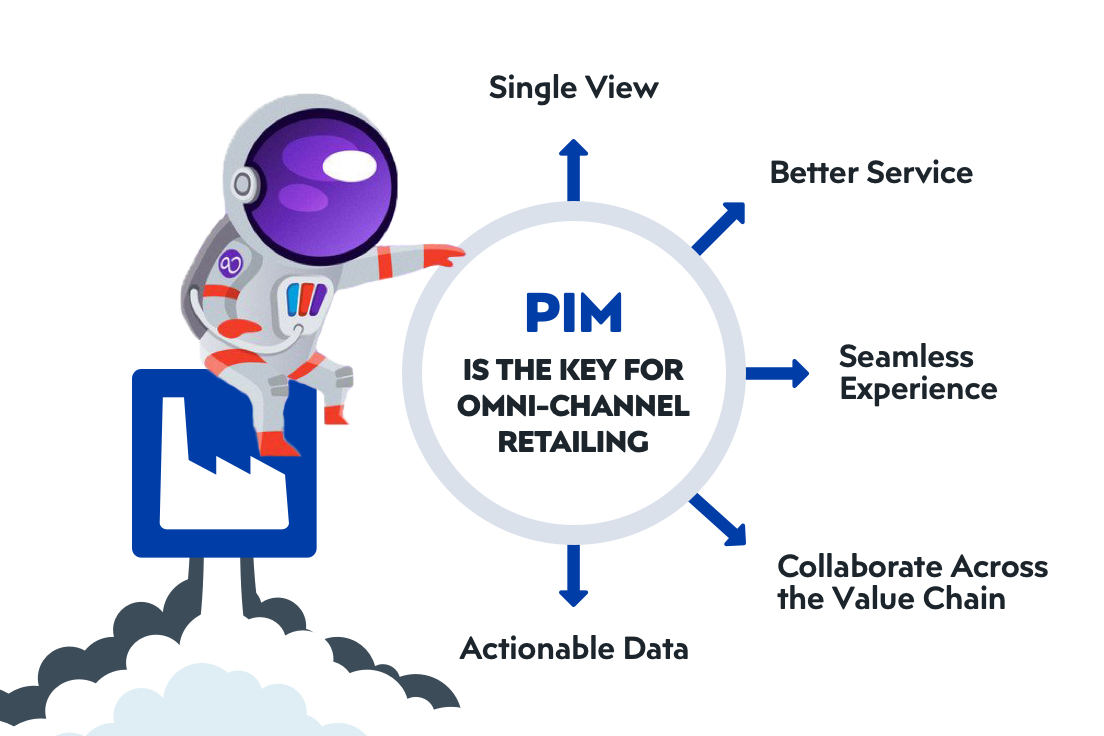
There are several benefits of PIM for retailers and here they are:
- Single view – Get a consolidated view about the available asset information across the organization, regardless of which channels are accessed.
- Better service – Give retailers the ability to engage and respond to customer inquiries promptly through various channels
- Seamless experience – Make it easy to align with customer experiences and allow retailers to cater to varying demands.
- Collaborate across the value chain – Offer a flexible and extendable syndication capability enabling retailers to make product data available to channel partners and marketplaces.
- Actionable data – Consistently gather critical information and service data about customers for deeper insight into the customer journey for higher customer satisfaction and loyalty.
Pimcore stands out as the winner when it comes it PIM, MDM, DAM (digital asset management) and CDP (customer data platform). It’s perfect for omnichannel businesses and it’s evolving continuously and it is enough reason for Pimcore to be your next eCommerce solution.
Omnichannel – the future
The whole idea behind omnichannel enablement is to deliver the best options to shoppers — every time and everywhere. This is an exciting phase for every industry vertical because of technological innovation and operational effectiveness.
The faster you connect the dots between the physical and digital worlds, the quicker you gain a competitive edge. A lot depends upon how future-proof your data management strategy is. Tune it up smartly and you will be in the lead.
To ensure you got all the information needed to succeed in your eCommerce and retail business, we present you with the top 10 eCommerce blogs you should follow to soak in the useful information (ours is great too!)
And now, if you are ready to take your business to the next level and enable your customers the omnichannel experience – we are more than happy to help you with developing your Pimcore solution!